#Battle of Delville Wood
Text
The Road to St. Julien: Letters of a Stretcher-bearer from the Great War :: William St. Clair
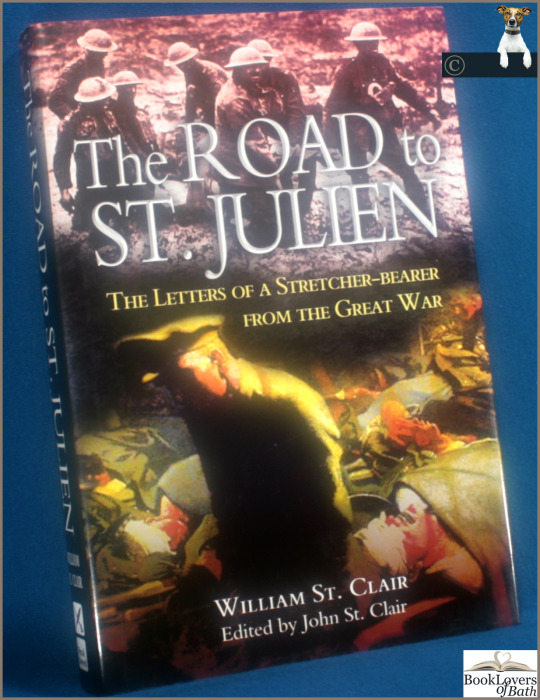
View On WordPress
#1-8441-5017-8#army biographies#army biography#army history#autobiographies#battle loos#battle somme#books by william st clair#british military history#delville wood#diaries#festubert#first edition books#john st clair#journals#memoirs#military history#passchendaele#royal army medical corps#scottish soldiers#soldiers correspondence#western front campaigns#world correspondence#world letters#world war i#world war one#wwi
1 note
·
View note
Text
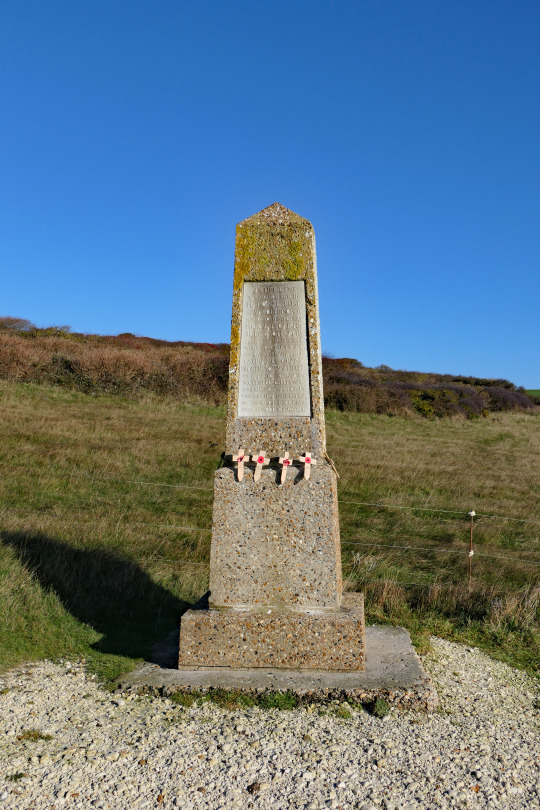

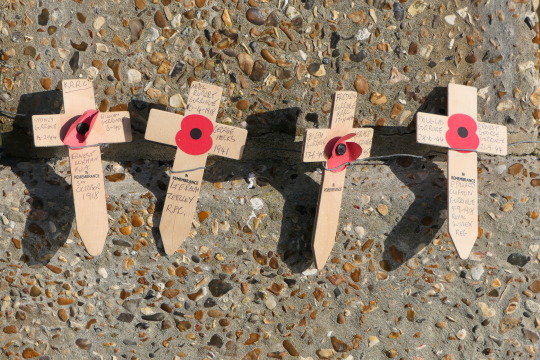
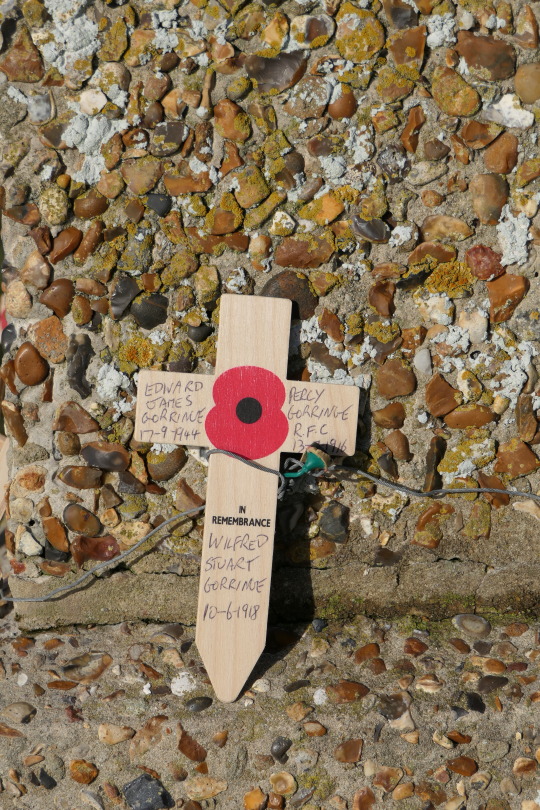
Monument uit de Eerste Wereldoorlog.
Dit monument staat ter nagedachtenis aan Norman Cains Robertson, kapitein van de 2e bataljon Hampshire Regiment. Hij sneuvelde op 20 juni 1917 in Hannover, Duitsland. Het monument herinnert ook Laurance Grant, 2e luitenant van het 2e bataljon King’s Own Scottish Borderes. Hij sneuvelde op 30 juli 1917 in Frankrijk, tijdens de slag om de Somme, in of vlakbij Delville Wood.
World War I Monument.
This memorial stands in memory of Norman Cains Robertson, captain of the 2nd battalion Hampshire Regiment. He was killed in action on June 20, 1917 in Hannover, Germany. The memorial also commemorates Laurance Grant, 2nd Lieutenant of the 2nd Battalion King's Own Scottish Borderes. He was killed in France on 30 July 1917, during the Battle of the Somme, in or near Delville Wood.
8 notes
·
View notes
Text
Events 7.14 (after 1900)
1900 – Armies of the Eight-Nation Alliance capture Tientsin during the Boxer Rebellion.
1902 – Peruvian explorer and farmer Agustín Lizárraga discovers Machu Picchu, the "Lost City of the Incas".
1902 – The Campanile in St Mark's Square, Venice collapses, also demolishing the loggetta.
1911 – Harry Atwood, an exhibition pilot for the Wright brothers, is greeted by President Taft after he lands his aeroplane on the South Lawn of the White House, having flown from Boston.
1915 – Beginning of the McMahon–Hussein Correspondence between Hussein bin Ali, Sharif of Mecca and the British official Henry McMahon concerning the Arab Revolt against the Ottoman Empire.
1916 – Battle of Delville Wood begins as an action within the Battle of the Somme, lasting until 3 September 1916.
1933 – In a decree called the Gleichschaltung, Adolf Hitler abolishes all German political parties except the Nazis.
1933 – Nazi eugenics programme begins with the proclamation of the Law for the Prevention of Hereditarily Diseased Offspring requiring the compulsory sterilization of any citizen who suffers from alleged genetic disorders.
1942 – In the Wardha session of Congress, the "Quit India" resolution is approved, authorising Mahatma Gandhi to campaign for India's independence from Britain.
1943 – In Diamond, Missouri, the George Washington Carver National Monument becomes the first United States National Monument in honor of an African American.
1948 – Palmiro Togliatti, leader of the Italian Communist Party, is shot and wounded near the Italian Parliament.
1950 – Korean War: beginning of the Battle of Taejon.
1951 – Ferrari take their first Formula One grand prix victory at the British Grand Prix at Silverstone.
1957 – Rawya Ateya takes her seat in the National Assembly of Egypt, thereby becoming the first female parliamentarian in the Arab world.
1958 – In the 14 July Revolution in Iraq, the monarchy is overthrown by popular forces led by Abd al-Karim Qasim, who becomes the nation's new leader.
1960 – Jane Goodall arrives at the Gombe Stream Reserve in present-day Tanzania to begin her study of chimpanzees in the wild.
1960 – Northwest Orient Airlines Flight 1-11 ditches off Polillo Island in the Philippines, killing one person and injuring 44.
1965 – Mariner 4 flyby of Mars takes the first close-up photos of another planet. The photographs take approximately six hours to be transmitted back to Earth.
1983 – Mario Bros. is released in Japan, beginning the popular Super Mario Bros franchise.
2002 – French president Jacques Chirac escapes an assassination attempt from Maxime Brunerie during a Bastille Day parade at Champs-Élysées.
2013 – Dedication of statue of Rachel Carson, a sculpture named for the environmentalist, in Woods Hole, Massachusetts.
2015 – NASA's New Horizons probe performs the first flyby of Pluto, and thus completes the initial survey of the Solar System.
2016 – A man ploughs a truck into a Bastille Day celebration in Nice, France, killing 86 people and injuring another 434 before being shot by police.
0 notes
Text


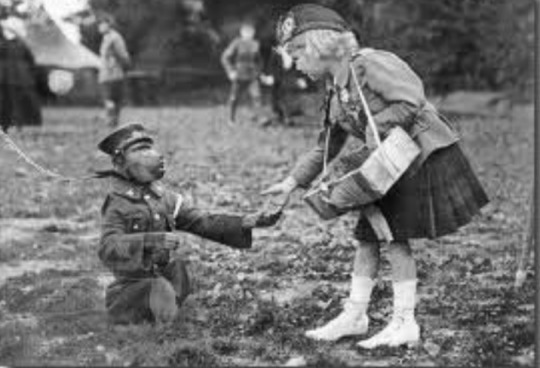
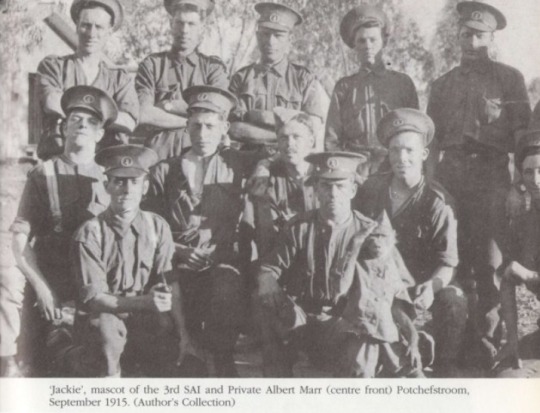
Corporal Jackie was a baboon in the South African Army during World War I.
He was the official mascot of the 3rd Transvaal Regimen when his owner Albert Marr was drafted into war and would not leave Jackie at home.
He asked his superiors if Jackie, too, could join the army and they said yes.
So Jackie was given an official style uniform with a cap, a ration set, and his own pay book.
Jackie would salute to superior officers and light soldiers' cigarettes. He would even stand at ease in the style of a trained soldier.
Due to his heightened senses, Jackie was useful to sentries on duty at night.
The baboon would be the first to know when an attack was coming or enemy soldiers were moving around nearby.
Jackie and Marr survived a battle where the casualty rate was 80%, in Delville Wood, early in the Somme Campaign.
When Marr was serving in Egypt, he was shot in the shoulder at the Battle of Agagia, 26 February 1916, while Jackie was with him, licking the wound as they awaited help.
Jackie was given his own rations while with the army and ate them with his own knife and fork, as well as his own washing basin.
When the regiment was drilled and marched, Jackie would be with them.
Jackie spent time in the trenches in France where he tried to build a wall around himself during extreme enemy fire.
However, a piece of shrapnel from an explosion flew over the wall hitting Jackie in the leg and arm.
When stretcher bearers tried to take Jackie away, he refused, desperate to finish his wall and hide.
Doctors treated Jackie's wounds, but they decided his leg had to be amputated and were surprised that he even survived.
Jackie was awarded a Medal of Valor for the event of his injuries and promoted from private to corporal.
After the war was over, Jackie was discharged with papers and went back to South Africa. He tragically died in a house fire in 1921.
#Corporal Jackie#baboon#South African Army#World War I#WWI#3rd Transvaal Regimen#Albert Marr#Battle of Agagia#Somme Campaign#animals#war hero#official mascot#Medal of Valor#South Africa
1 note
·
View note
Photo
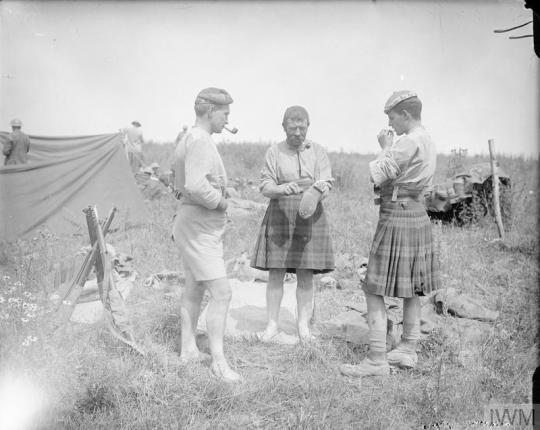
Battle of Delville Wood. Troops of the 4th South African Regiment (South African Scottish) after the attacks on Longueval. Montauban, July 1916.
27 notes
·
View notes
Photo
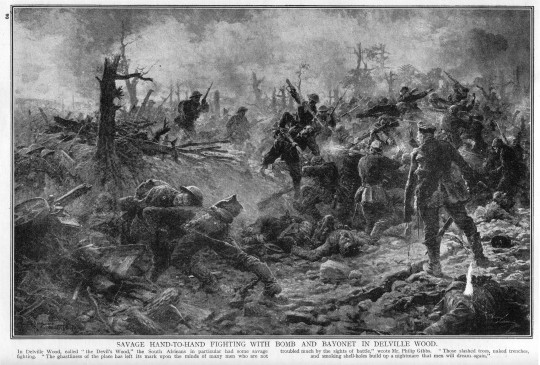
With 253 KIA OTD Jul 18 1916 is the deadliest day of #WWI for the South African Brigade. They were fighting during Battle of Delville Wood, or Devil's Wood. Drawing of the Battle Of Delville Wood from a book by H.W. Wilson
18 July 1916-07-18
Top Tenz 10 Deadliest Days on the Western Front
Top single day fatality numbers for the Western Front of WWI.
27,000 France Aug 22 1914
19,240 UK Jul 1 1916
10,851 Imperial Germany Mar 21 1918
2,414 Canada Apr 9 1917
1,230 AUS Jul 19 1916
847 NZ Oct 12 1917
500 Portugal Apr 9 1918
674 BEL Aug 23 1914
418 USA Oct 4 1918
310 Newfoundland Jul 1 1916
253 South Afica Jul 18 1916
For other theatres of war see:
Deadliest single days of World War I
14 notes
·
View notes
Photo
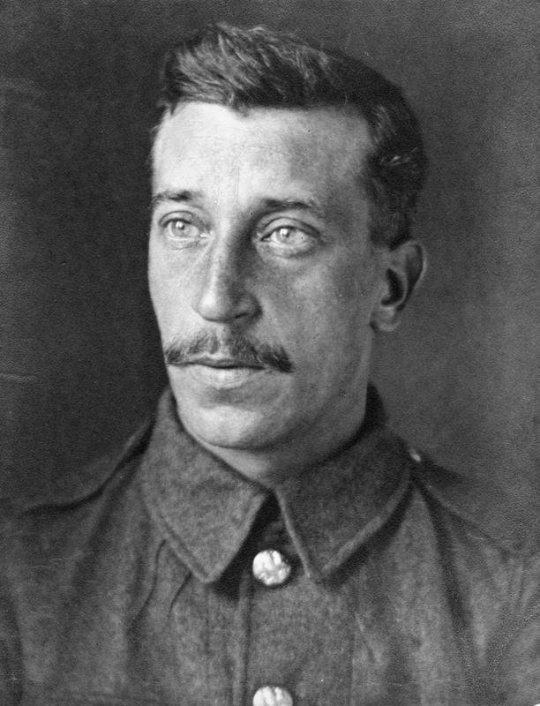
Private Bertie Frith Dinelli G/12369, 8th Battalion, The Queen's (Royal West Surrey Regiment). Death: 6th September 1916.
Son of Paul and Ellen Dinelli, of 2 Marlborough Road, Colliers Wood, Merton in Surrey. Reported missing, believed killed in action, aged 38, at Delville Wood on 6th September 1916 during the Battle of the Somme. At the end of the war in November 1918, his parents were still awaiting confirmation of his death. His body was eventually located and he is now buried at the London Cemetery and Extension, Longueval.
my source: https://thisdayinwwi.tumblr.com/post/187536255634/sep-6-1916-in-wwi
6 notes
·
View notes
Text
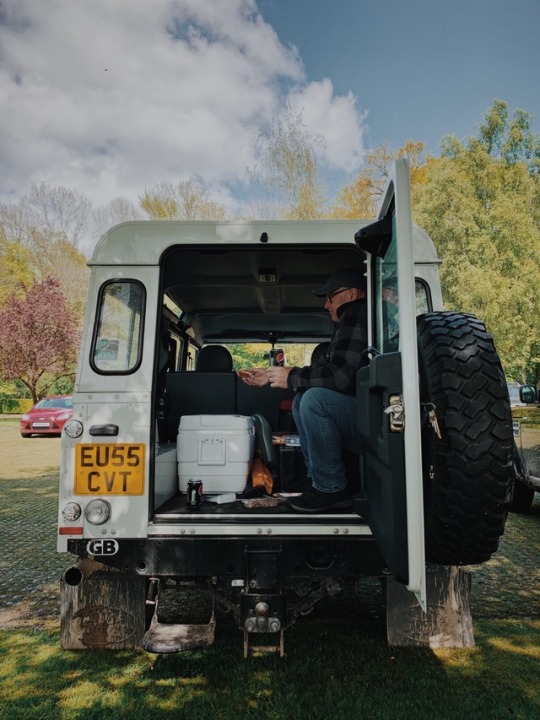
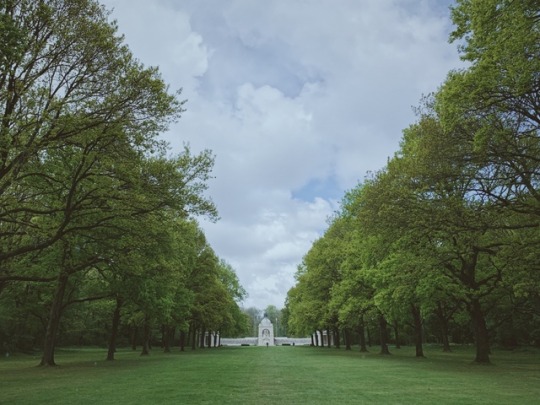
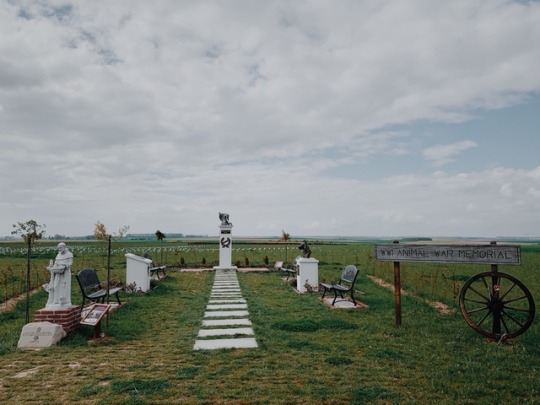

05/05/2019 - Day 2 (Part 2)
As we finish our cliche French lunch of cheese, bread, ham and cheese puffs we walk over to the cemetery over the road from the South African Memorial.
Delville Wood
Known as Devil’s Wood, as the fighting here was particularly ferocious. The majority of the wood was eventually taken by South African soldiers on the 15th July 1916, and they held it even after numerous German counterattacks for six days, until they were relieved.
High Wood
During the war ion some maps it was labelled as Bois des Foureaux french for “Wood of the Forks”. High Wood was of tremendous significance during the Battle of the Somme and were first attacked on 14th July 1916, but like many attacks in ww1 the British were unable to take it.
It was only until 15th September 1916 the woods were finally taken, On the 19th of September, the 47th Division which had lost more than 4,500 men was relieved by the 1st Division. Major-General Barter who commanded the 47th Division, was dismissed or wastage of men ironically though he was later knighted.
Pozières Memorial
Relates to the period between March and April 1918 when the Allied Army was driven back across the former battlefields, and months that followed before the victory. The memorial is now home over 14,000 casualties of the UK and 300 of the SA Forces who died on the Somme from 21/03/18 to 7/08/18.
Once we had finished at the Pozières memorial our day had finally finished and we headed back to the accommodation for food and rest.
#landrover#defender#landroverdefender#defender110#4x4#defendertd5#overland#overlander#td5#ww1#ww1 history#delville woods#high wood
12 notes
·
View notes
Photo

Today I am remembering my Great-great Grandfather Lance Corporal Thomas William Duckers of the 6650 1st Battalion The Royal Welsh Fusiliers, who was killed in action 28th August 1916 during the Battle of the Somme. He volunteered as a runner dispatching vital orders and information between the battalions on the frontlines, a terribly dangerous post as snipers often laid in wait and mines were set. He was reported missing in action-believed dead on the 28th after failing to report back to his regiment during the Battle of Delville Wood. His body was never recovered. He is commemorated on the Thiepval Memorial in France as well as our local cenotaphs. We will remember them.
#rl stuff#we will remember them#thomas william duckers#remembrance day#lest we forget#remembrance sunday#wwi#family stuff
4 notes
·
View notes
Text
Events 7.14 (after 1900)
1902 – The Campanile in St Mark's Square, Venice collapses, also demolishing the loggetta.
1911 – Harry Atwood, an exhibition pilot for the Wright brothers, is greeted by President Taft after he lands his aeroplane on the South Lawn of the White House, having flown from Boston.
1915 – Beginning of the McMahon–Hussein Correspondence between Hussein bin Ali, Sharif of Mecca and the British official Henry McMahon concerning the Arab Revolt against the Ottoman Empire.
1916 – Battle of Delville Wood begins as an action within the Battle of the Somme, lasting until 3 September 1916.
1933 – In a decree called the Gleichschaltung, Adolf Hitler abolishes all German political parties except the Nazis.
1933 – Nazi eugenics programme begins with the proclamation of the Law for the Prevention of Hereditarily Diseased Offspring requiring the compulsory sterilization of any citizen who suffers from alleged genetic disorders.
1943 – In Diamond, Missouri, the George Washington Carver National Monument becomes the first United States National Monument in honor of an African American.
1948 – Palmiro Togliatti, leader of the Italian Communist Party, is shot and wounded near the Italian Parliament.
1950 – Korean War: beginning of the Battle of Taejon.
1951 – Ferrari take their first Formula One grand prix victory at the British Grand Prix at Silverstone.
1957 – Rawya Ateya takes her seat in the National Assembly of Egypt, thereby becoming the first female parliamentarian in the Arab world.
1958 – In the 14 July Revolution in Iraq, the monarchy is overthrown by popular forces led by Abd al-Karim Qasim, who becomes the nation's new leader.
1960 – Jane Goodall arrives at the Gombe Stream Reserve in present-day Tanzania to begin her study of chimpanzees in the wild.
1965 – Mariner 4 flyby of Mars takes the first close-up photos of another planet. The photographs take approximately six hours to be transmitted back to Earth.
1983 – Mario Bros. is released in Japan, beginning the popular Super Mario Bros franchise.
2002 – French president Jacques Chirac escapes an assassination attempt from Maxime Brunerie during a Bastille Day parade at Champs-Élysées.
2013 – Dedication of statue of Rachel Carson, a sculpture named for the environmentalist, in Woods Hole, Massachusetts.
2015 – NASA's New Horizons probe performs the first flyby of Pluto, and thus completes the initial survey of the Solar System.
2016 – A man ploughs a truck into a Bastille Day celebration in Nice, France, killing 86 people and injuring another 434 before being shot by police.
0 notes
Text
War Graves, ANZAC Day & Paris
24-25/04/2018: Late start today as we intend to look around the war graves, do at least le Circuit du Souvenir and then rest before tomorrow's dawn service. Cecilia, with a day of rest behind her was keen to get out and look around.
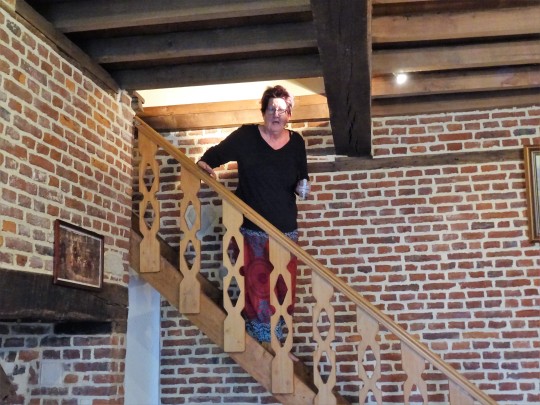
Raring to go
While we were all having tea and coffee with breakfast, Thomas decided to reverse his car out and reversed into Benoît’s horse truck ramp. Cockup five. It had been down since we arrived. Thomas didn't trust reversing cameras so he ignored the camera in the car. He then proceeded to reverse out and just clipped the end of the ramp putting a small tear in the tyre wall. And guess what? He didn't take out insurance for windscreens and tyres. Benoît suggested that we take it to a place in Varennes but to make sure that we had the best opportunity to get a new tyre, we headed to Amiens.
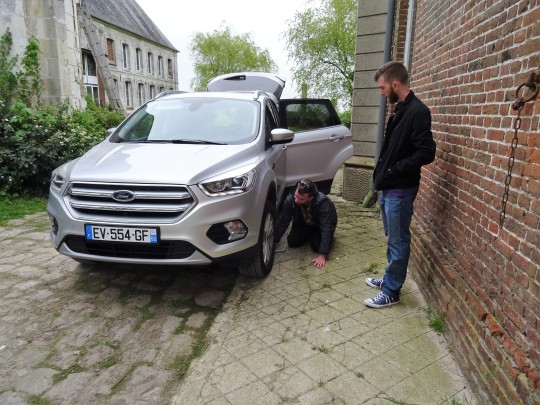
Where to put the jack
What an ordeal, we looked up some tyre places, entered Goodyear Dunlop into the GPS and we were on our way. The thirty kilometre trip went without a hitch until we were almost there. As went drove along Rue de Poulainville we were right next to a large factory. It had Dunlop France stamped all over their boundary fence and on a building or two. The actual address was in Avenue Roger Dumoulin just around the corner. When we were out front it was in fact another large factory. The GPS actually took us a few hundred metres down the road. When we got there, it told us to turn around and go back, which we did. After twenty minutes or so of chasing our tails we pulled into the Dunlop factory and asked for directions. They told us that they were the spot but didn't sell tyres. They pointed us to a place further down the road that sold tyres. Fine we thought and headed off.
The complex that we were in had a rather interesting past being much bigger around five years ago. The factory on the other side of the road had been making cheap tyres for years and doing their arse. After several attempts to restructure with different product lines and shift times, amongst court action and union resistance, they gave up and decided to close. The Texan CEO of Titan, another tyre manufacture who had recently pulled out of take over negotiations, questioned if Goodyear thought he was stupid when they suggested that they reopen negotiations. "The French workforce gets paid high wages but works only three hours. They get one hour for breaks and lunch, talk for three, and work for three. I told this to the French union workers' faces. They told me that's the French way!" was his reply. When the factory was on its final legs the workers took a couple of executives hostage. That didn't work either.
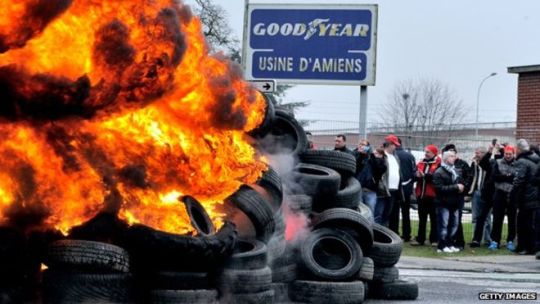
Typical French protest (Getty Images)
The next step was to find this tyre place. A couple of times up and down the road found it in a small factory complex at the back. We got the tyre out, rolled it into the work shop and waited for service. The dude behind the counter told us they only do truck tyres. Go around the corner to First Stop Tyres in Rue André Durouchez and they should be able to help. By this time Shane was fuming, actually, everyone was feeling pretty pissed off as the day was half over and instead of being well and truly on the war grave trail we were still trying to replace the bloody tyre. He and Tom packed the tyre back into the car and headed around the corner, unpacked the tyre and took it into the workshop. The dude come out, looked at it and said it would take three days to order one. At least we had an answer but not the one we wanted. "Try Norauto near Carrefour on Rue Botticelli". One last chance. We headed over to the northern end of town, pulled into the carpark and got the tyre out again. By this time Cecilia was starving so she, Jo and Beau headed in to look for lunch. They were soon joined by Thomas and Shane after again a knock back. Looks like we have to risk another flat and push on with no spare. After lunch, and Cec investing in an electronic cigarette setup, we were on the road again to take up where we were supposed to be hours earlier. The start of the Commonwealth Remembrance Trail, Le Circuit du Souvenir.
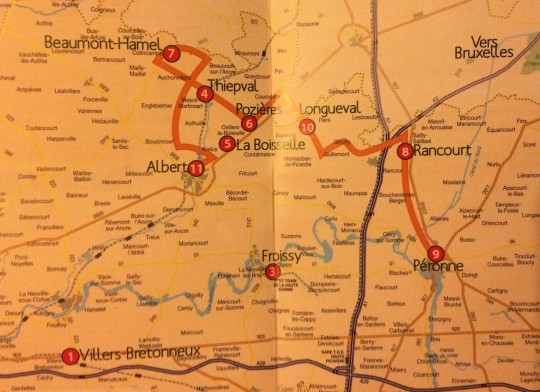
Le Circuit du Souvenir
We resumed our journey just before one and turned a leisurely day into a hurried one as the start of the trail, Péronne, was almost an hour away. When we arrived, we parked down the road and walked up the path to Péronne et l'Historial de la Grande Guerre, the Museum of the Great War and paid for a double entry, this one and Thiepval which we would visit later.
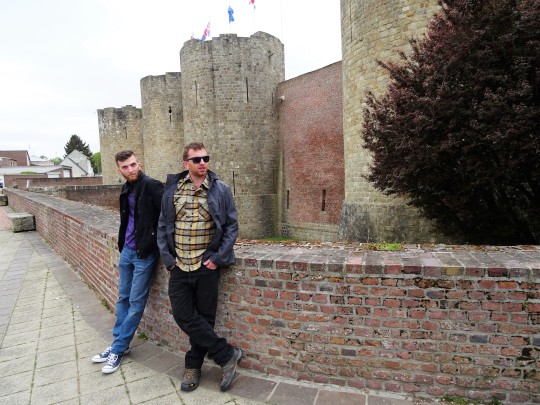
Waiting in Péronne
As with the last time we visited, the museum was really well equipped but with an extra section that was under construction. This time it was finished but we moved into the museum proper and left "The Guardrooms" until later. What immediately struck our eye was the old Saint-Chamond tank in the courtyard, a box on tracks with a small barrel at the front. Although crude in design, it must have been rather confronting for the infantrymen when they first encountered these things and a sign of things to come. As rudimentary as it was, it was the second French designed tank of the First World War, both heavier and longer than its predecessor. None exist today, they were all destroyed. This was in fact a replica.
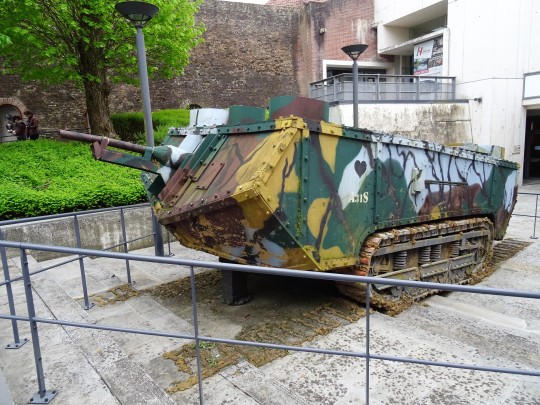
New addition to the courtyard, a life size replica by graphic and décor design students at Le Corbusier vocational college in Tourcoing. None of the originals remain.
The ramp to the left, leading to the entry was lined with helmets from throughout the ages, all contained within the niches of the fortress walls. Once in, we showed our tickets and entered into the Salle Avant-guerre, the first room containing militaria and chronological history of events that led up to the war. This led into two central galleries, Salle 1914-1916 and Salle 1916-1918. To the side was Salle Bataille de la Somme, a small theatrette that showed a thirty minute film of the Battle of the Somme. The galleries dealt with the first and second halves of the Great War respectively. In the centre of each were displays of weapons and military equipment from the period, recessed into the floor. Salle 1914-16 displayed mannequins dressed in the uniforms of the nations represented at the front with all their kit, personal weapons and creature comforts such as musical instruments. Support staff, nurses and medics were also there. Salle 1916-1918 was similar but concentrated on the heavier weaponry used at the front. Both galleries were surrounded by glass cabinets with paraphernalia from the period and audio-visual stations with film monitors, sound archives, and touch screen tables and tablets scattered throughout. The display was from three separate perspectives, German, French and British.
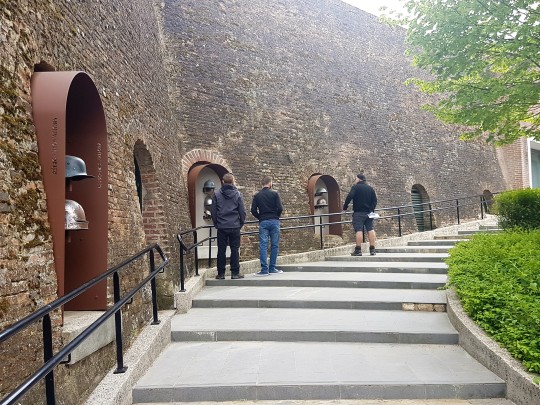
Helmets fill the niches
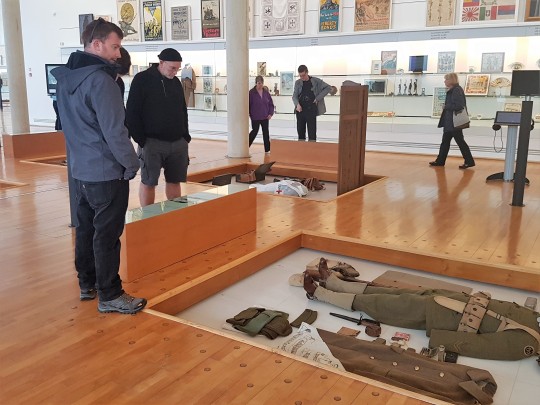
Salle 1914-1916
As we headed towards the exit, we took a look at Salle Otto Dix, a room dedicated to the German soldier and artist. On display were representations of his Der Krieg series of prints depicting his experiences of the horror of the war. Very dour. The last room before leaving was Salle Après-guerre showing items, posters etc that were displayed or recovered after the war.
As we left the galleries and re-entered the castle's courtyard, The Guardrooms were down to the left. There were four permanent exhibition areas namely, Castle of Péronne, Sentry over the Somme showing the evolution of the castle and its relationship with Péronne throughout history, Péronne, a Stronghold on the Border which was an audio visual animation of the city's wars and sieges over the ages, A Territory Caught in the Grip of War, photos of the area during and immediately after the war and the one we were most interested in, Australians and the Battle of Mont Saint-Quentin. This room was really good with maps and photos of Aussies during their taking of Mont Saint Quentin.
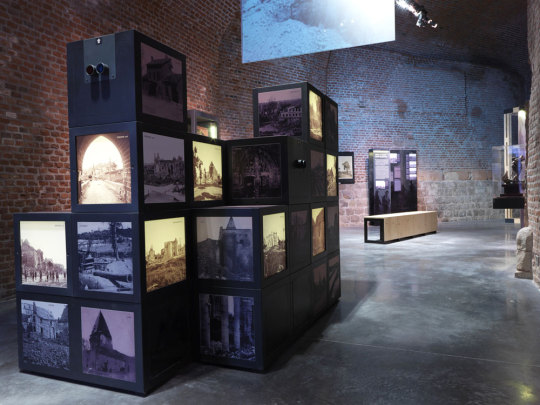
Salle-des-gardes-Australiens-©-Pascal-Brunet
After the visit we jumped back in the cars and headed a few kilometres further, through Bouchavesnes-Bergen and green fields to the next stop on the map, Rancourt. This area experienced heavy fighting during the last three months of the Battle of the Somme where the 32nd French Army Corps took on the Germans with the intention of penetrating their communications line between Bapaume and Péronne. They managed to do so, finally stopping at Saint-Pierre Vast Wood nearby during November 1916. One of the many fallen was Jean Du Bos, Second Lieutenant in the 94th Infantry Regiment. His parents commissioned the French Chapel of Remembrance fronting the roadway in 1923 in memory of he and his mates.
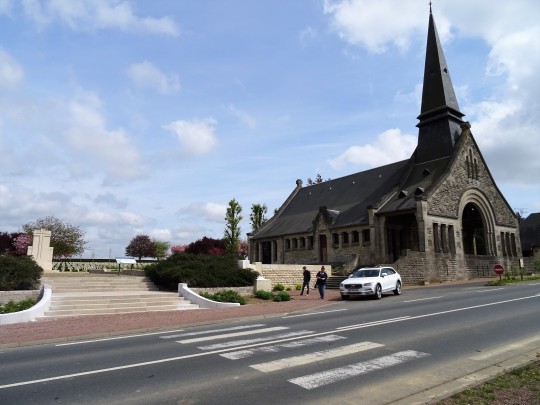
“Souvenir Français” Chapel of Remembrance
We stopped here for a while, walking through the cemetery where over eight and a half thousand French soldiers are buried, a simple white cross symbolising their sacrifice. Just a paddock away was the Rancourt Deutscher Soldaten Friedhof, the Rancourt German Soldier's Cemetery where almost ten and a half thousand Germans are buried, several thousand in mass graves. Straight across the road behind a small cottage was a British cemetery holding about eighty.

Simple white crosses. La nécropole nationale de Rancourt
It was then onto Delville Wood. The memorial impressed us a couple of years ago so another visit was a must. Thousands of South Africans died here during 1916 pushing back the Germans in the Battle of Delville Wood. More battles were fought here during the German spring offensive of 1918 but most met their demise during the original confrontation. The place was obliterated by shelling during the battle that saw almost nothing remain, bar one tree. Jo left the final of the school kid crosses from Tilegry primary school here. So many men died in the bombardment that thousands still rest beneath the replanted forest that is there today. First stop was the cemetery and then up Central Avenue toward the Memorial Arch in the distance. The wide avenue and oak lining gave a great sense of tranquillity. The trees were part of the restoration of the wood in the 1920's and were germinated from acorns collected in Franschoek. The person responsible for the restoration came from there and asked a local boy to collect a bag full of acorns from a tree that had germinated from acorns that French Huguenot Jean Gardiol had brought to South Africa in 1688.
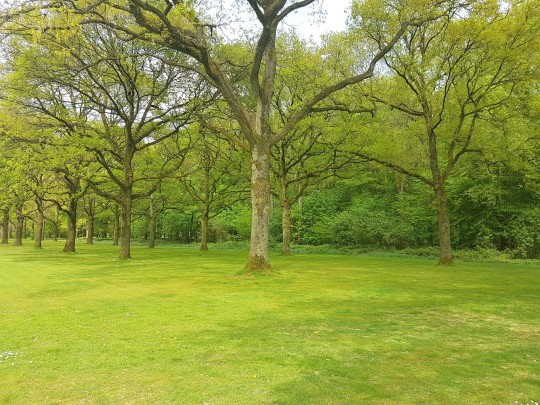
The double row of oak trees lining Central Avenue
The memorial and museum were accessible this time. Shane and the boys went in for a look, Jo and Cec looked around outside, revisiting the tree that survived the whole ordeal, Aussie crosses and other nations’ symbols resting on the trunk. Although it was behind the main complex, it seemed to be in some way the centre of it all.

The Last Tree. Still there
The path went through the memorial arch and beyond to the museum. Whilst the memorial was built around 1926, not long after the war, the museum was built by 1986 and built around the Cross of Consecration. It was designed around the Castle of Good Hope in Cape Town, the first European fortification erected in South Africa. The pentagonal building has full internal glass walls with the cross solemnly on display.
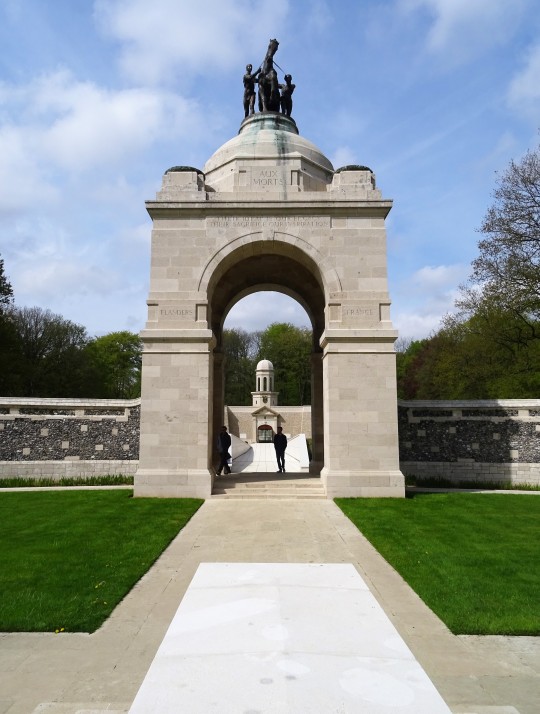
Looking through the Memorial Arch toward the museum.
Built to commemorate the sacrifice of around twenty five thousand South African service men and women of all races who volunteered to fight for their country in both World Wars and in Korea, the displays included remnants from the area as well as large bronze reliefs depicting the history of battle. The front doors opened and immediately before us was a large glass etching of Delville Wood after the battle. Directly behind the etching was the Cross of Consecration in a central courtyard that we were excluded from. Just to the side was a roll of honour from one of the wars and to the left of the roll was the displays of the memorial, bronze reliefs, a glowing glass representation of the scorched earth and plenty of photos and stories.
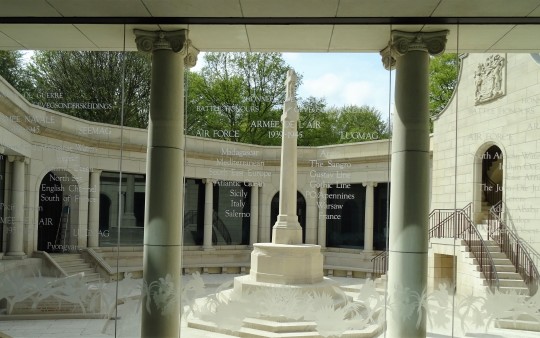
Cross of Consecration

1914-1918
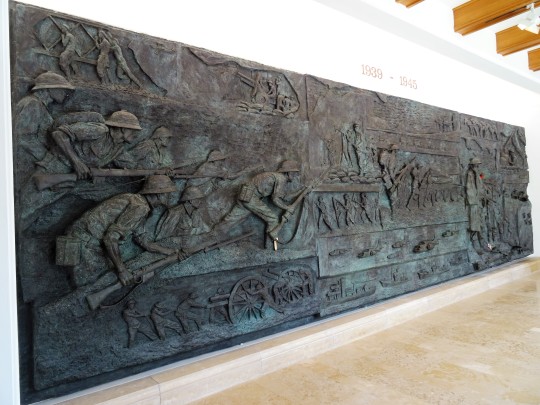
1939-1945
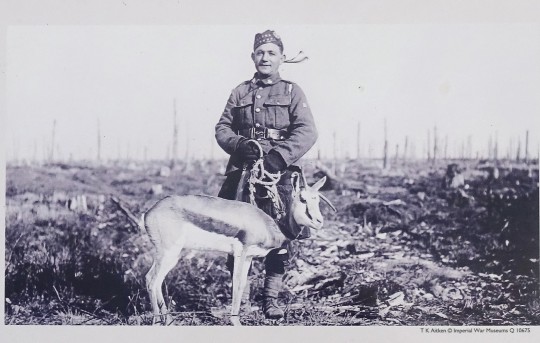
Nancy the springbok, mascot of the 4th South African Regiment in 1918, almost two years after the battle.
The next step was to find Jo and Cec. We thought that that they would have been for a walk around but not to our surprise, Jo was still looking around while Cec was sitting near the arch having a vape. We revisited the oldest tree in the village and then had to move on. The day was escaping us.

Cec vaping beneath Castor and Pollux
Our next stop was a brief one at Windmill Hill, which now included a memorial to the fallen animals, and then on to a big one, the British Memorial to the Missing at Thiepval via the new museum, the second half of our two for one deal at Péronne. The memorial arches contain the names of over seventy thousand soldiers whose remains were never found or unidentified and its kept that way. If the remains of a soldier is found by locals going about their business and is identified, the soldier is given a full military funeral at a cemetery near where they were found. Their name on Thiepval Memorial is then filled in. On the way back to Clairfaye, we stopped for one more memorial, one which we couldn't find last time. The Beaumont-Hamel New Foundlanders' Memorial was just about to close when we pulled up. Just past the information centre was a pathway through the fields that had been preserved as they were left after the war. Trenches everywhere giving a good perspective of the landscape of the day, without the rain and mud. To the side was a large rocky mound with the statue of a caribou where one could ascend the path to the top and look over the battlefield where so many died.

Some tranches had small boardwalks for stability but most didn't
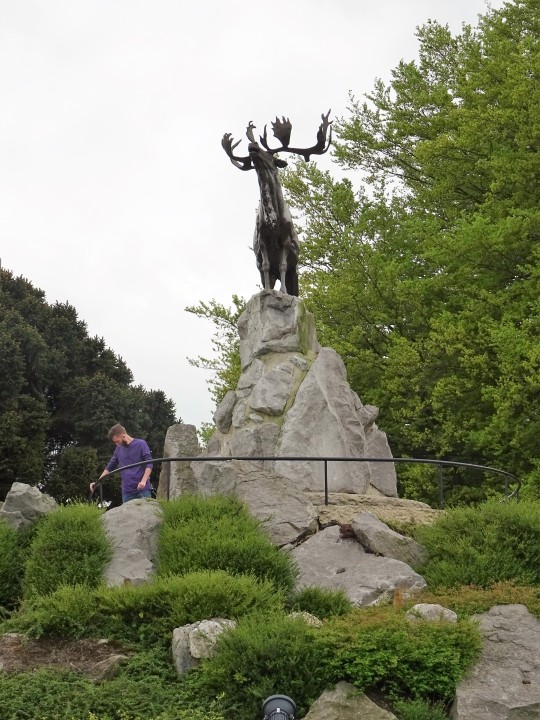
Beau on the memorial
That was it for the day, back to the apartment for a rest before tackling the dawn service. Just a rest, not a sleep as there was too much to do. The rush, or semi-rush was on as with Joanne and Cecilia laying a wreath, we had to be early, so the next few hours were spent eating, relaxing, packing and cleaning. Our agreement with Benoît through Airbnb was that we had to vacate by mid morning but we would still be in Villers-Bretonneux. Luckily there was no one booked in the next day. It was fine with him to leave our gear inside the apartment to collect after the morning was over. The twenty odd kilometres back verses the loading of all of our belongings that night and leaving the vehicle in a carpark was a no brainer.
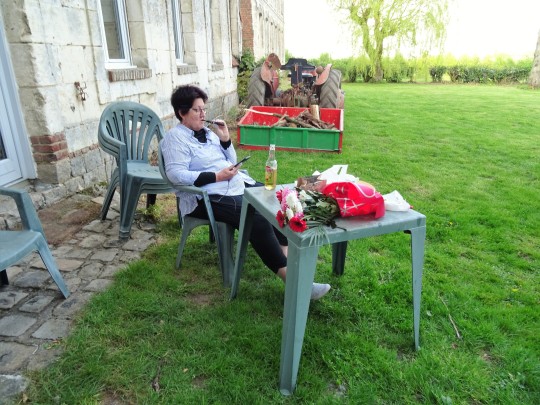
Cecilia preparing for the dawn service
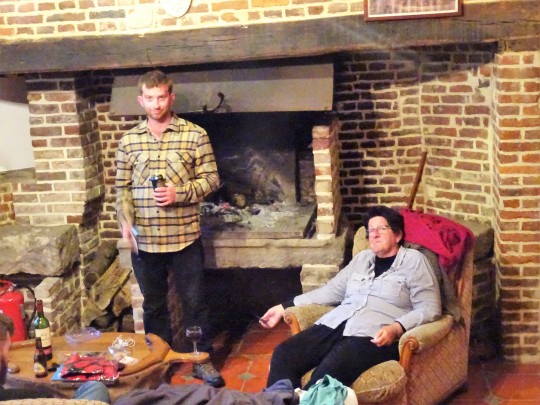
Thomas and Cec preparing for the service
Ninety percent packed, we headed out at eleven o'clock towards the township of Glisy, where we parked up the Volvo and joined the waiting game to go through security and onto the shuttles. The place wasn't even open yet but the queue was long and as expected soldiers everywhere. Once onboard, we headed straight off as the buses filled quickly.

Inside the security tent
Almost as soon as we left, Jo received a phone call from ABC Radio which had been a couple of days in the planning. She gave an interview on 2NC about where we were and why we were there, talking about Henry Ringland and the whole ANZAC Day experience so far. Apparently, messages from home said that she sounded good.
The greeting at the Australian Memorial was as expected, queues of people waiting to get scanned. It was okay though as we felt safe with all of the security around. Terrorists are after all cowards, and look for soft targets. There were no such targets here.
Out of the scanning marque, and for the second time on our trip, we walked up amongst the headstones leading to the cenotaph. It was cold, and although not wet, we were nervous about a downfall soaking everyone to the bone. Little sacrifice with what those before us, and the reason why we were there, went through. We were welcomed by Aussie support staff with some comforting goodies once we reached the action area. To our left was another marque, full of tea and coffee, pastries and water. We were set and grabbed a seat in a pretty good spot reserved for descendants and wreath layers, we were both. By two o'clock the entertainment started. The Army brass band and an accompanying choir. By five thirty, the service commenced.
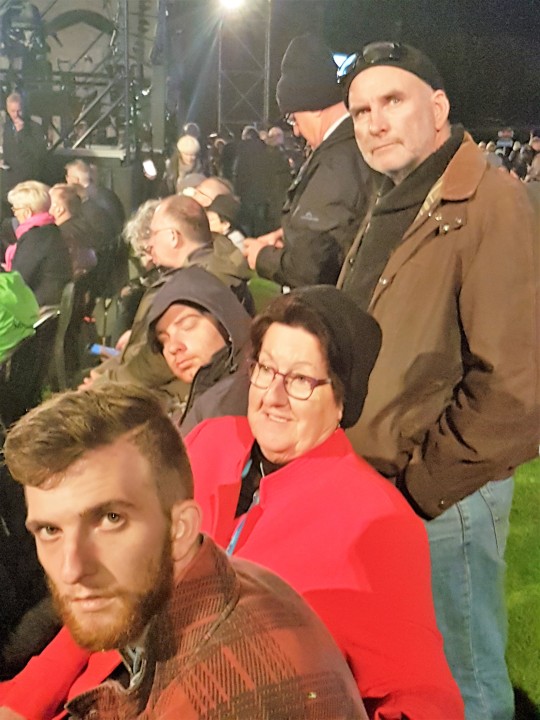
Waiting for it all to start
Amongst the VIP's were several pollies, the Prime Minister and some underlings including Tony Abbott, the Governor General and Prince Charles. The service was very moving, starting with a short film, an extract from a movie called "The Telegraph Man". This brought everyone to tears with Jack Thompson being the local postie in a small town during the war and everyone dreaded him coming anywhere near them as he only ever had bad news, namely a telegram reporting their sons' deaths. This was followed by soldiers faces, posing before they left for battle and dressed in their uniform, posing with their families or out in the battlefield. All projected onto the white face of the tower. After the speeches, the final part of the ceremony was the Last Post, performed by a lone bugler from the top of the tower. It would have rung across the valley, what was once the battlefield where many, many lives were lost. Very poignant indeed and underpinned by a shower of rain before the final act, wreath laying.
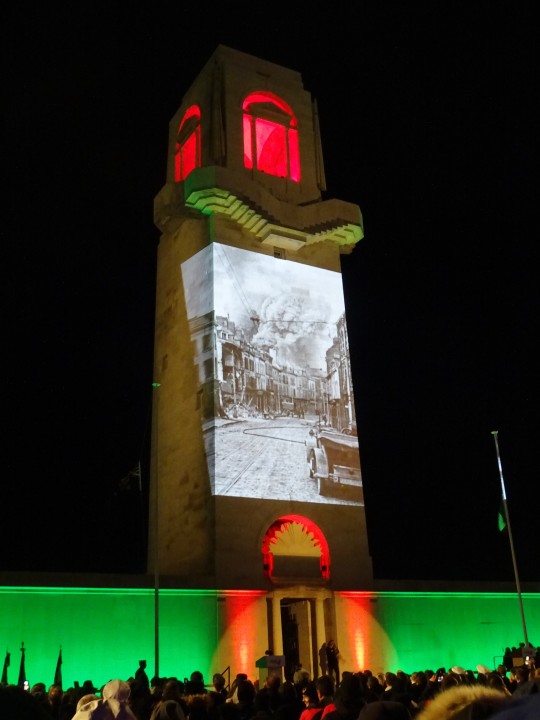
The service begins
Once the officials had laid their wreaths, it was the turn of the direct descendants and general public to lay flowers. When prompted, Jo and Cec walked up to the steps of the tower and laid the flowers and a wreath for Uncle Henry Joseph Ringland. Originally Jo, Cecilia, Beau and Thomas were going to lay the flowers but an email restricted it two people per family. Jo regrets leaving the boys behind as other families had more people out there.
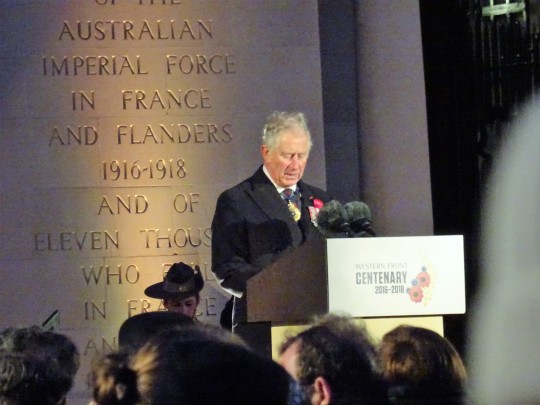
Prince Charles saying a few words
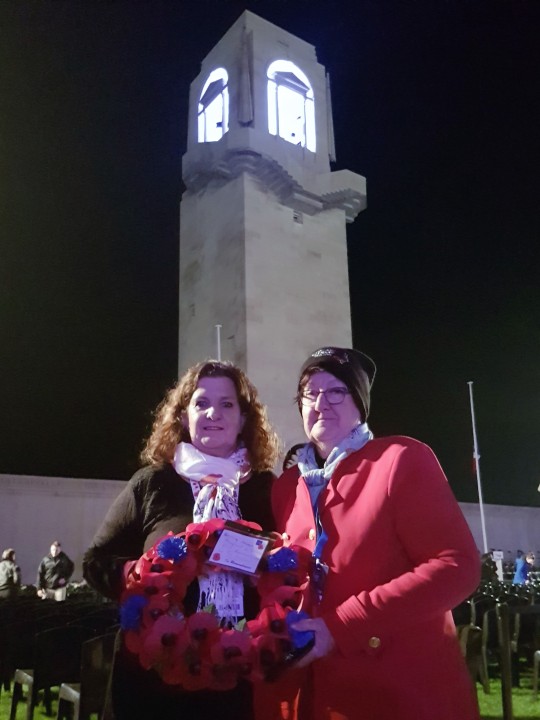
Waiting their turn to go up

Jo and Cec waiting for the family in blue to finish (on the big screen)
Finally, the service was over and surprisingly, instead of being whisked away by security, Prince Charles stayed around and chatted to the plebs. He didn't rush neither and genuinely seemed to want to be there. He outlasted the pollies. We didn't get close to him and made a bee line up the hill for breakfast at the Victoria Café. We did the same thing as last time and the food was good. If we timed it right, which we did, we would have time for breakfast and then work our way down to the French service at eight thirty.
A pleasant surprise awaited us while we were waiting to be served. Ex-Prime Minister and now back bencher, Tony Abbott arrived for a meal. Shane took the opportunity to introduce himself and have a brief word. Both commented about the significance of the morning and how moving it was. Shane commented about how the Somme is where it all happened and that this place should hold more significance on ANZAC day than Gallipoli. Tony agreed and mentioned that we also get on better with the French than the Turks. As quickly as the conversation had begun, it was over.

Enter the ex-PM
The French ceremony was a different affair. As expected, much more low key but every bit as important as ours. A decent crowd milled around to watch the proceedings, starting with the arrivals of the dignitaries, through a guard of honour manned by French firefighters with ceremonial axes and then the Australian armed forces.

Guard of Honour at the French ceremony

Yes, Prime Ministers
Speeches made and wreaths laid, the ceremony concluded. Everyone dispersed, us down to the end of the street with heaps of others for the shuttle back to Glisy. Back to the Volvo and back to Clairfaye. With our bags already pretty well packed, it was a case of checking the apartment, loading up the car and bidding farewell. As a parting gift, Benoît gave us a bottle of his red wine, produced locally from a private vineyard. The only identification was a sticker in French instead of a label. Dated 2005. Cecilia thanked him and in return gave him a beany from the service with the ANZAC emblem on it. We parted ways and headed toward Paris.
It was a slow trip to CDG as Thomas couldn't go over eighty due to the dodgy little tyre on his car. He did anyway, about a hundred clicks and managed well, but towards the end of the Motorway and nearing Paris, Shane found himself nodding off. The lack of sleep was getting the better of him. The thirty plus hours awake didn't seem to affect Thomas as much. We were travelling at over a hundred kilometres an hour so he pulled over and Jo drove the last part.
Once we left the Motorway, Shane, back in the driver’s seat, took a different turn than Thomas due to the GPS variations. With no service we struggled to contact each other. When we did, we decided to meet again at the Le Celtic in Le Thillay where we had started our journey a few days before. After meeting up in the car park across the road we set our sights on the airport and headed off. We followed each other for a while but were soon separated again.
To complicate matters, although the GPS gave an accurate location of where the Sixt return area was, getting there was a nightmare. There were so many turns available once in the airport, taking the wrong turn was inevitable. At one point, Shane stopped and asked a guy repairing the boom gates at the entry of somewhere. He told Shane to drive straight ahead and exit back onto the road that he was just on. The only thing was that at the other end of somewhere there was another boom gate and he couldn't get out. After a bit of yelling into a microphone the gate was raised. When we finally chose the right road, we ended up in a massive car park, the spiralling access roads leading us in circles, actually and metaphorically.
Finally, after what seemed and certainly was ages, we found the place, pulling up at the Sixt returns office. As we were to return the vehicle, Jo went to look for Thomas and Cecilia who were trying to locate us by phone calls, they were still lost. With stress levels at the extreme, Shane jumped into the car, collected Jo and went to find them, which we did, a bit of a way off from the Sixt office. Shane was meant to lead Tom back but drove like he was on the freeway and lost them. The F bomb was being used by Cecilia and Tom, we finally were reunited and unloaded.
There was no opportunity to wash the cars so they went back dirty. The dudes at Sixt didn't care, they backed it into a spot near the office and went over it for damage. There was only one mark on the Volvo but it was already there. They looked for damage on Tom's car, we told them about the punctured tyre and not about the damaged rim. It was the first thing they looked for.
With all luggage out we grabbed some airport trolleys caught the lift back down a couple of levels and straight outside to the taxi rank. There were a few cabs around but all seemed too small. A young woman who was there to organise the cabs asked a few questions and stood us to the side. There were a few dodgy cab drivers around, particularly an African who stalked us inside the terminal trying to get us into his minivan before we could even get to the rank. We ignored him. The woman ended up calling up for a minivan to jump the queue and take us all together. Seventy Euro for a memorable trip back to Paris by a maniac who reached speeds over a hundred kilometres an hour, weaving in and out of traffic and abused people beside him as we went. Anyway, we got there.

Excited by the trip from CDG
The driver dropped us off straight out front of our apartment where we would spend the next few days, 220 Rue de Rivoli. We immediately phoned our contact and was advised of the security number to get us through the oversized front door and into a courtyard. From there she met us and sorted us out getting up to the top floor (plus a couple) in the lift. After a few trips as it only held two at a time, we were at the apartment. In the roof space. The apartment was cosy to say the least. No dining room, only a small bench with stools. There was a bedroom with two singles on the bottom floor and a bedroom with a very tight double bed on the top. The toilet was downstairs next to the kitchen, no window and no vent or exhaust fan, equalled gross smells from the when well used, and the bathroom upstairs, joined by a very steep set of stairs. Break your neck type of steep. Care needed to be taken from the top bedroom as the doorway led straight onto the top step. An accident waiting to happen. The boys were in the room down stairs, Jo and Shane upstairs and Cecilia on the fold out couch. Once again Cecilia, Shane and Jo’s suitcases had to be kept down stairs and were squeezed under the little table and stools that was suppose to be a dining table.

Doorman from next door, not there to greet us
Once the person who greeted us had left, we headed straight out looking for a feed, Cec's shout. Jo, Beau and Cec went first, and while waiting for the rest in the foyer , were abused by an old French lady who demanded to know who they were. Glared at Beau, who was standing away from the girls and asked were we all together, and what they were doing in the foyer. Jo explained we were on holidays staying in an apartment and we were waiting for Hubby and other son. She demanded to know what number apartment we were staying in, we didn’t know and said the 6th floor somewhere near the stairs. She then said is it Airbnb, then went on to whinge about Airbnb in both English and French. Jo smiled sweetly and said “Je ne parlez francais je ne pas comprehend”. The old bat demanded to see our rental paperwork. Jo told her she didn’t have it on her and if it’s such a big deal to take it up with the owner as it wasn't our problem. Cecilia was quite stressed though and was terrified the lady was the owner of the apartment block or the caretaker. She was convinced we would get back from dinner and find our luggage out on the street. By the time the boys had arrived the old sheila was gone. Not that they would have done much. Probably copped it as well. Anyway, we made our way out of the front doors, walked left down the pathway and then left again. At the end of Rue de 29 Juliet was a shopping mall covered in glass. There wasn't much open, but to the right hand side was a sizable fruit market which ended up being just the thing for Cecilia. All the trip so far, she wanted some asperges or asparagus. She finally got what she wanted but paid an ungodly sum for them. They were huge, not like back home. She also bought the largest punnet of strawberries we have ever seen. Then after looking around the immediate area (our host recommended this area), we decided to have burgers at Razowskis, a local burger joint. Cecilia's shout. We sat down and studied the menu.
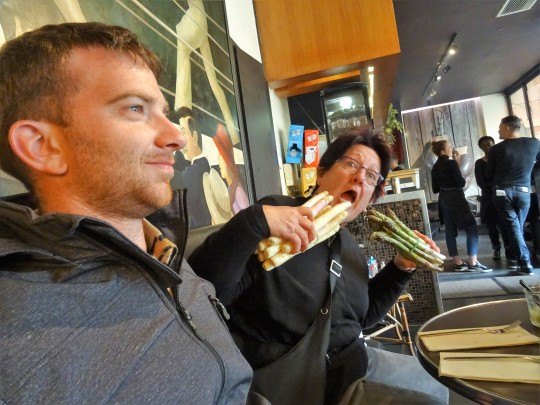
Eat me
The meal was good, as far as burgers were concerned but three hundred dollars for five burgers and beers was ludicrous. Cecilia insisted so that was that. Back to the apartment for an early night. Tomorrow, the Orsay.
0 notes
Photo

#Historical roots and #heritage of Hertz in #SouthernAfrica. - 1919: Delville Wood Motors Car Hire Two survivors of World War 1’s Battle of Delville Wood join forces to start South Africa’s (SA) first car rental company. - 1930s: Robert Murray buys the company andchanges the name to African Car Hire. - 1950s: Hertz makes its entry ... Hertz grants Murray the franchise for SA. - 1986: Political pressure … Hertz International supportsrequest for US businesses to disinvest from SA. - 1997: Hertz makes its return … At the invitation of Nelson Mandela, Hertz’s return to SA is formalised. #AfricaMonth #KnowYourHistory #ShapeYourFuture
2 notes
·
View notes
Text
Header image info / cigarette case & bullet

The cigarette case pictured above belonged to Private M Smith of the 5th Bn Cameron Highlanders. It was damaged by a German bullet at Loos in 1915. Private Smith was later killed at Delville Wood during the battle of the Somme in July 1916.
#Somme#Cameron Highlanders#Highlanders#livesaving#lifesaver#bullet#WW1#ww1 research#ww1 history#military#military history#armedforces#ammunition
23 notes
·
View notes
Photo









New-York Tribune, Jun 16 1918
Top Row
Undated photo taken by ThomasKeithAitken, IWM Q 10654, of Royal Inniskilling Fusiliers, 109th Brigade, 36th Division, with their regimental goat mascot.
Dec 22 1917 photo taken by ThomasKeithAitken, IWM Q 10597, of a kneeling soldier is lifting up a pet dog in his shrapnel helmet.
Undated photo taken by Ernest Brooks takes this photo of the Trench Mortar School mascot on a German Trench Mortar.
Second Row
Undated photo taken by Ernest Brooks, IWM Q 26623, of a group of British soldiers playing with their pet mascot, a baboon, which is wearing a British Army cap, and has a pipe in its mouth. They are servicemen of the Royal Engineers from South Africa, who landed in Belgium in October 1914, served through all three Battles of Ypres, Loos and Somme, now serving on the Italian Front.
Feb 1 1918 Thomas Keith Aitken takes this photo IWM Q 12143, of rabbits reared by a Kite Balloon Section RFC at Biefvillers.
Third row
Jul 18 1918 photographer John Warwick Brooke takes this photo, IWM Q 5691, of a white goat mascot of the 2nd Battalion, Royal Welsh Fusiliers, and soldier-spectators at the 33rd Division Horse Show at Cavillon.
Feb 7 1918 Thomas Keith Aitken takes this photo, IWM Q 10679, of 36th Divison officer playing with a kitten.
Feb 17 1918 Thomas Keith Aitken takes this photo, IWM Q 10675, of ‘Nancy’, the Springbok mascot of the 4th South African Regiment at the South African Brigade’s memorial service at Delville Wood.
63 notes
·
View notes
Text






05/05/2019 - Day 2 (Part 1)
Day 2 is the first full day of the trip and starts at a nice 9.30am. The groups meet at a local supermarket to stock up on lunch essentials, mainly consisting of bread and cheese (when in France).
The iternary today is the following;
Various cemeteries
Sausage Valley
Lochnagar Crater
Mametz Wood
Delville Wood
High Wood
Caterpillar Valley
German Bunkers
Multiple frontline positions
Instead of talking about every detail of travelling from point to point i’d like to share the facts we learnt at each important location.
Sausage Valley
The name given by British soldiers during the first world war to a valley south of of La Boisselle in the Somme. Named because the Germans would fly an observation balloon that looked like a "sausage", at the head of the valley. To the north of La Boisselle a valley was therefore logically known as Mash Valley.
Lochnagar Crater
The Crater was created by a large mine that was at the time believed to be placed beneath the German front line on the first day of the Battle of the Somme, The British named the mine after ‘Lochnagar Street’, a British trench where the Tunnelling Companies of the Royal Engineers dug a shaft down about 90 feet deep into the chalk.
Then excavated some 300 yards towards the German lines to place 60,000 lbs of ammonal explosive in two large underground chambers. The aim was to destroy a strongpoint called Swabian Heights south of the village of La Boisselle.
Mametz Wood
Was the objective of the 38th Division (Welsh), to attack over a ridge, focussing on the German positions in the wood at a lower level, This occured between 7th July and 12th July 1916. On 7th the first wave of men proceeded with the expecatation to take the wood in a matter of hours. However, strong fortification and machine guns decimated over 400 soldiers before they’d even reached the wood.
Further attacks were attempted and by the 12th of July 1916 it was estimated 4,000 men were killed or wounded from the Welsh division attempting to clear the woods which in the end was the result.
Our next stop will be Deville woods where we will have lunch and visit the cemetary and South African memorial.
#landrover#defender#landroverdefender#defender110#4x4#defendertd5#overland#td5#overlander#ww1#ww1 history#fricourt#mametz#longueval#la boisselle#lochnagar crater
8 notes
·
View notes
Link
The WW1 Soldiers KIA in a Single Day on the Western Front Check out our New Biography Channel: https://www.youtube.com/c/biographics Modern warfare casualty numbers are often deceiving as they record how many soldiers can no longer fight not how many were killed. Casualty figures include those Killed In Action (KIA) but they also count those Wounded In Action (WIA), Missing In Action (MIA) and those taken Prisoner of War (POW) as these soldiers are no longer on the unit’s roll call. This is further complicated because a lot of nonfatal wounds that occurred on one day will eventually days later kill the soldier. Prisoners offer the same difficulties as POWs often die in the horrible conditions of the prison camps. For example, during World War II the Nazis were particularly brutal to their Soviet prisoners causing 3.3 to 3.5 million deaths, or 57% of all Soviet POWs. →Subscribe for new videos every day! https://www.youtube.com/user/toptenznet?sub_confirmation=1 Help us translate our videos: https://www.youtube.com/timedtext_cs_queue?msg=10&tab=0 - Learn more why you might want to help: http://ift.tt/1l7FnjV Find more lists at: http://www.toptenz.net Entertaining and educational top 10 lists from TopTenzNet! Subscribe to our Facebook: http://ift.tt/1QRrRgJ Business inquiries to [email protected] Other TopTenz Videos: Top 10 TERRIFYING Facts About MAORI WARRIORS https://youtu.be/V-5-1ffAe9w?list=PLQ4d2-ByGhnJxUxVB7_iVyUoudkWy59vW Top 10 Toughest VIKING WARRIORS https://youtu.be/dmsC4T7UiNY?list=PLQ4d2-ByGhnJxUxVB7_iVyUoudkWy59vW Coming up: 10. Germany - Spring Offensive or Kaiserschlacht 9. Australia and New Zealand 8. Portugal - Battle of La Lys 7. Belgium - Dinant 6. South Africa - Battle of Delville Wood 5. Canada - Battle of Vimy Ridge 4. England - Battle of the Somme 3. Newfoundland - Beaumont Hamel 2. United States of America - Meuse-Argonne Offensive 1. France - Battle of the Frontiers Source/Further reading: http://ift.tt/1s5syYg http://ift.tt/2hDjXeM http://ift.tt/2A4JNE5 http://ift.tt/2zGWvIB http://ift.tt/2o6JqSZ http://ift.tt/2zJ7Wj2 http://ift.tt/1Hxcgjl http://ift.tt/2zIrQLd http://ift.tt/2A6cy3j http://ift.tt/2zKMMB2 http://ift.tt/2A6cyQR http://ift.tt/2zKBhtH http://ift.tt/2A4JQzL https://www.youtube.com/watch?v=k7v3cq1ZJjM http://ift.tt/2zIrSTl http://ift.tt/2A6cArX http://ift.tt/2zGWvZ7 http://ift.tt/1TyHzuw http://ift.tt/2zIrTqn https://www.youtube.com/watch?v=-Tv5gBa9DQs http://ift.tt/2A4JSHT http://ift.tt/2zKMMRy http://ift.tt/2uwWPrt
0 notes